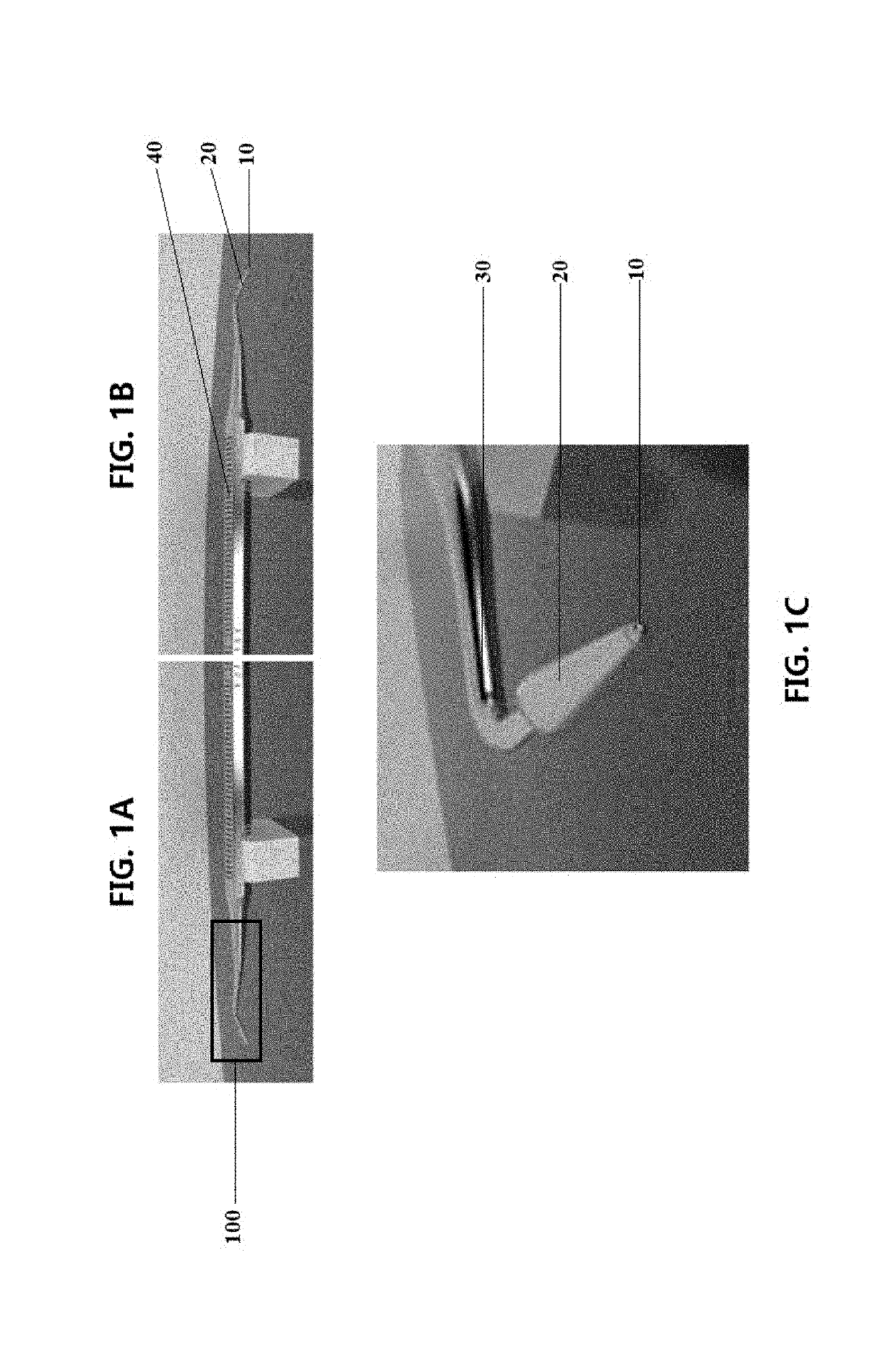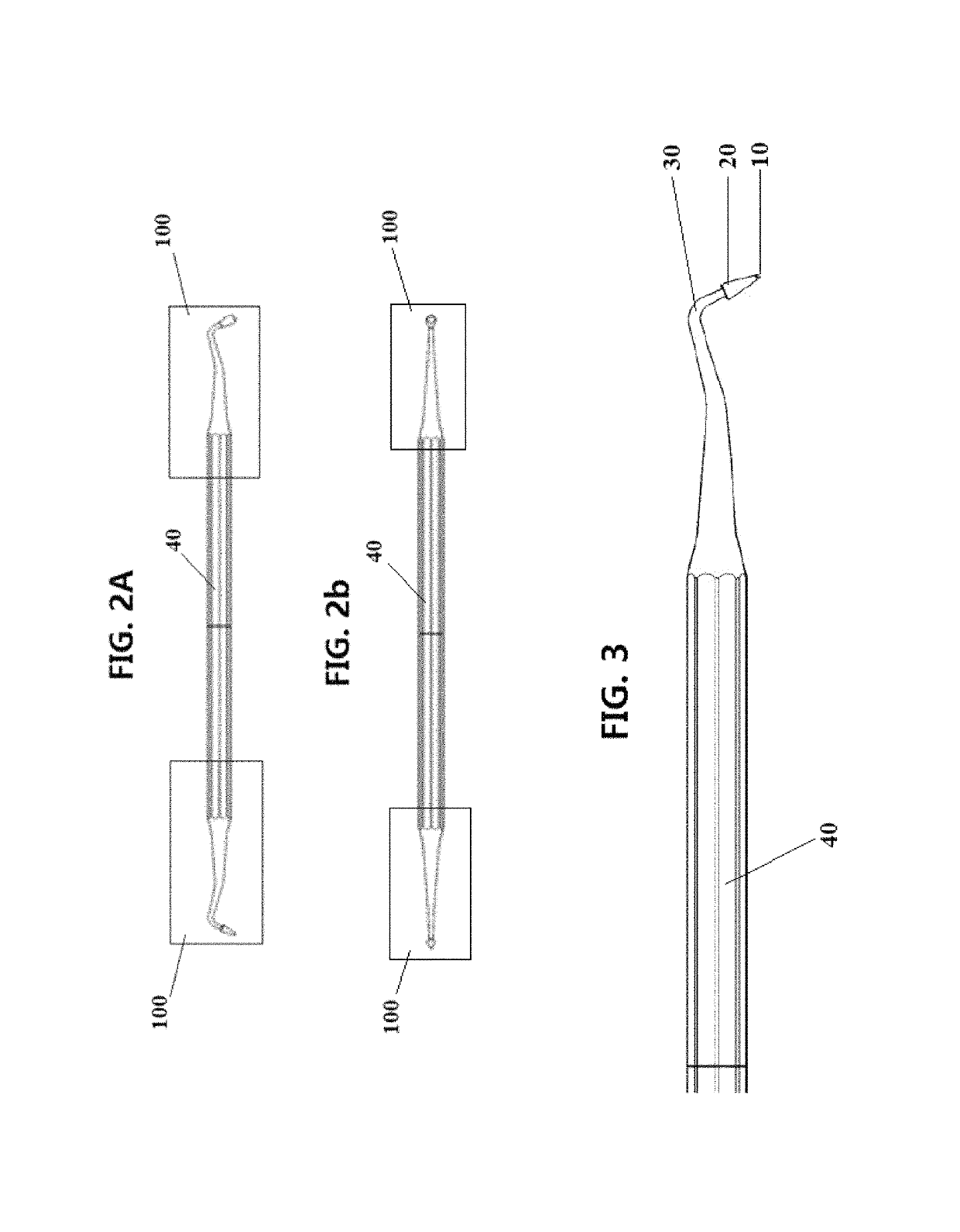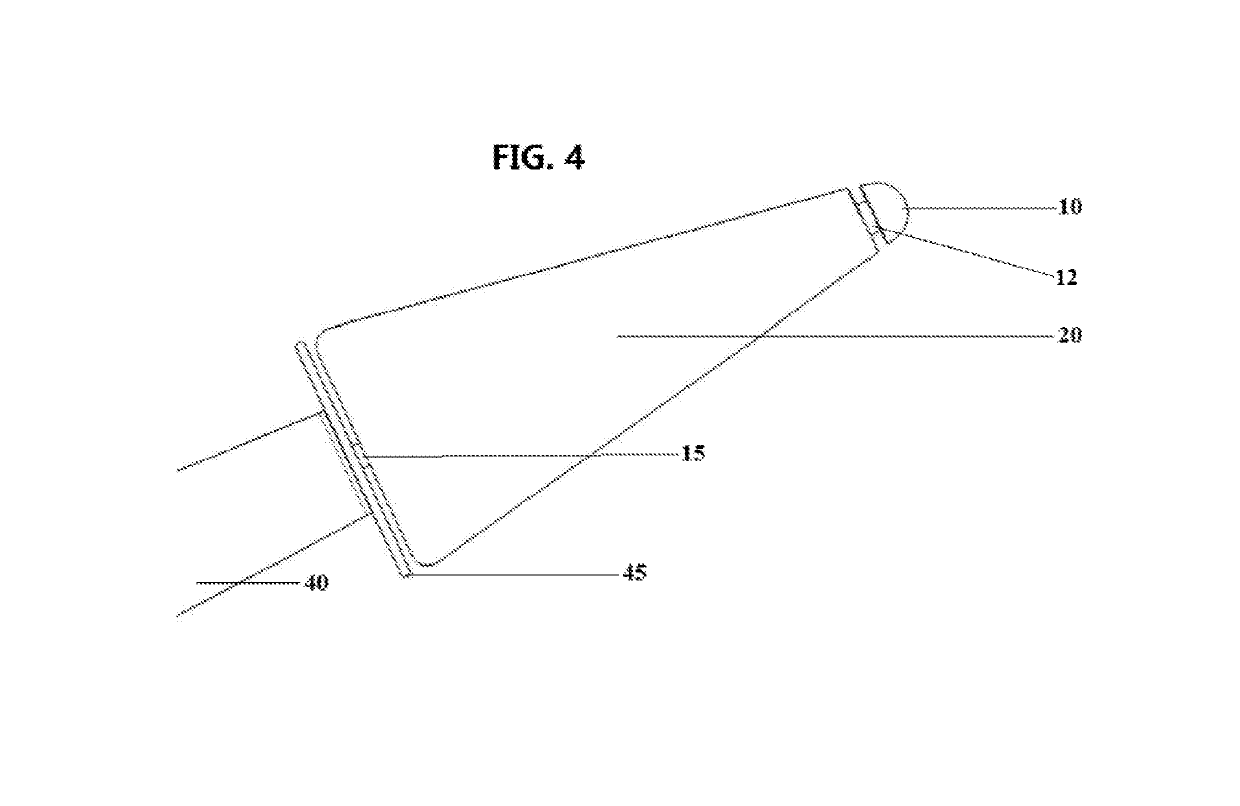Composite restoration roller
a technology of composite materials and restoration rollers, applied in the field of dental instruments, can solve the problems of affecting limiting the use of composite materials, so as to reduce the incorporation of air bubbles, and reduce the adherence of dental composite materials
- Summary
- Abstract
- Description
- Claims
- Application Information
AI Technical Summary
Benefits of technology
Problems solved by technology
Method used
Image
Examples
embodiments
[0044]The following embodiments illustrate various aspects of the present invention. They are not to be construed to limit the claims in any manner whatsoever. The invention is directed to dental instruments as well as methods of using these dental instruments to provide dental restorations with superior durability, strength, and aesthetics that are substantially free of bubbles.
[0045]In one embodiment the invention is directed to dental instrument suitable for distributing a restorative material on a surface of a tooth that comprises a handheld shaft having one or two working ends, said working end(s) comprising a shoulder with an distally projecting arm around which is longitudinally mounted a frustum roller that has its narrow section projecting away from the center of the shaft and that is capped by an end of the arm; wherein the frustum conical body is mounted on the arm so that it can rotate around its longitudinal axis; and wherein the working ends are sized to distribute a r...
PUM
 Login to View More
Login to View More Abstract
Description
Claims
Application Information
 Login to View More
Login to View More - R&D
- Intellectual Property
- Life Sciences
- Materials
- Tech Scout
- Unparalleled Data Quality
- Higher Quality Content
- 60% Fewer Hallucinations
Browse by: Latest US Patents, China's latest patents, Technical Efficacy Thesaurus, Application Domain, Technology Topic, Popular Technical Reports.
© 2025 PatSnap. All rights reserved.Legal|Privacy policy|Modern Slavery Act Transparency Statement|Sitemap|About US| Contact US: help@patsnap.com



